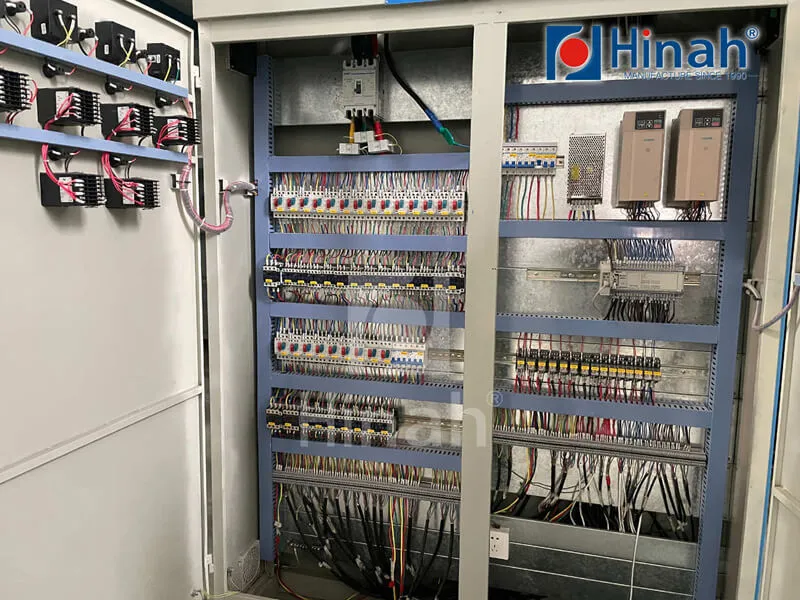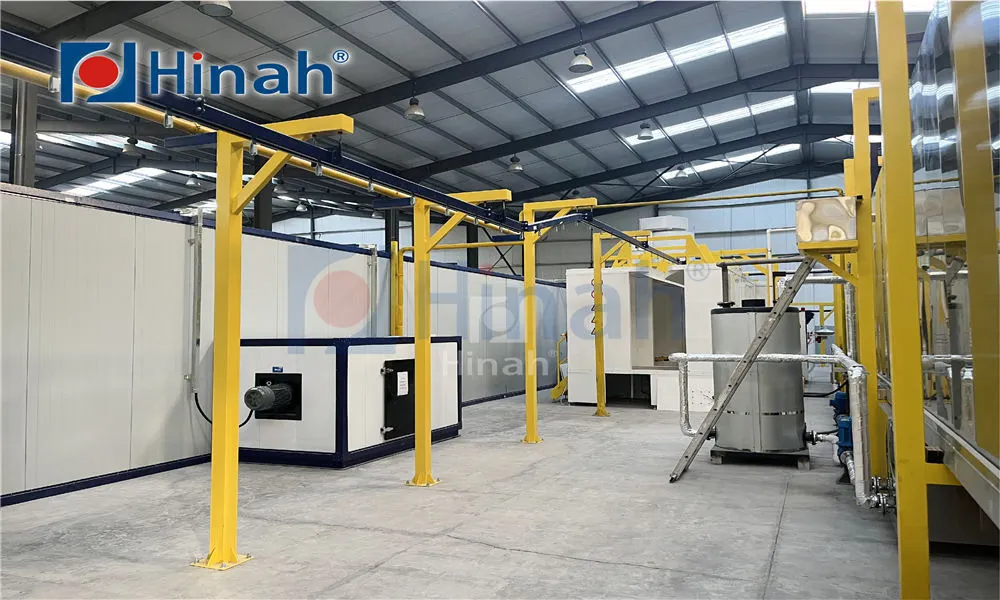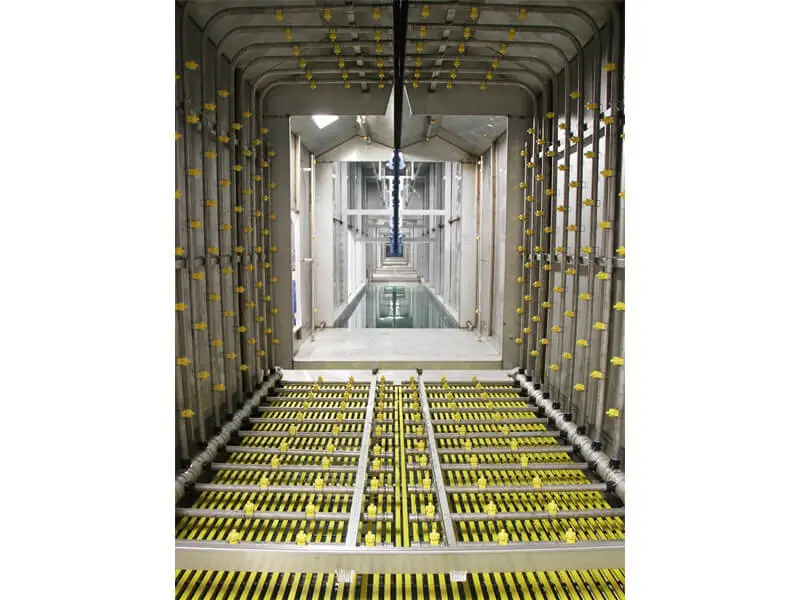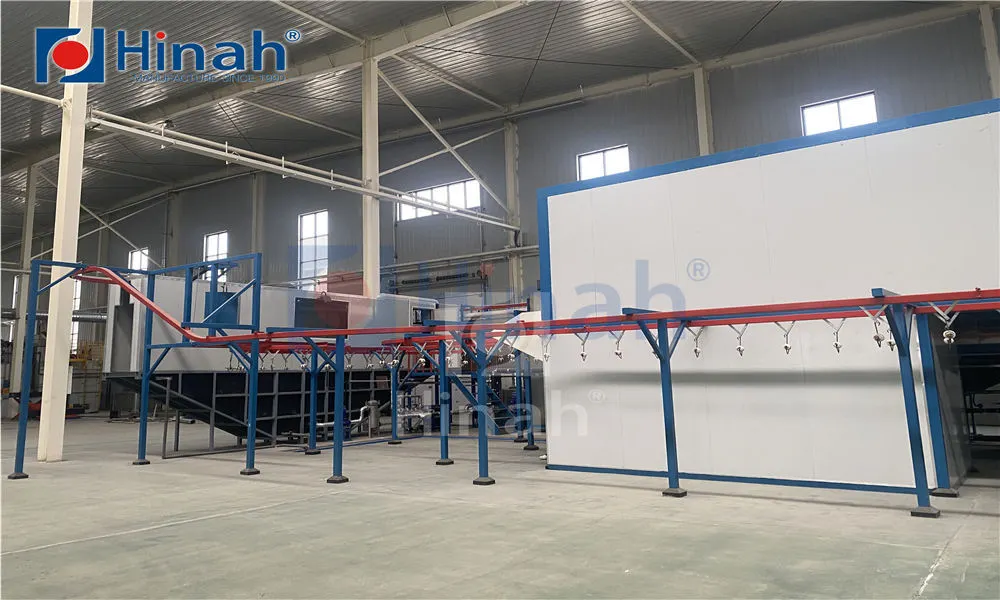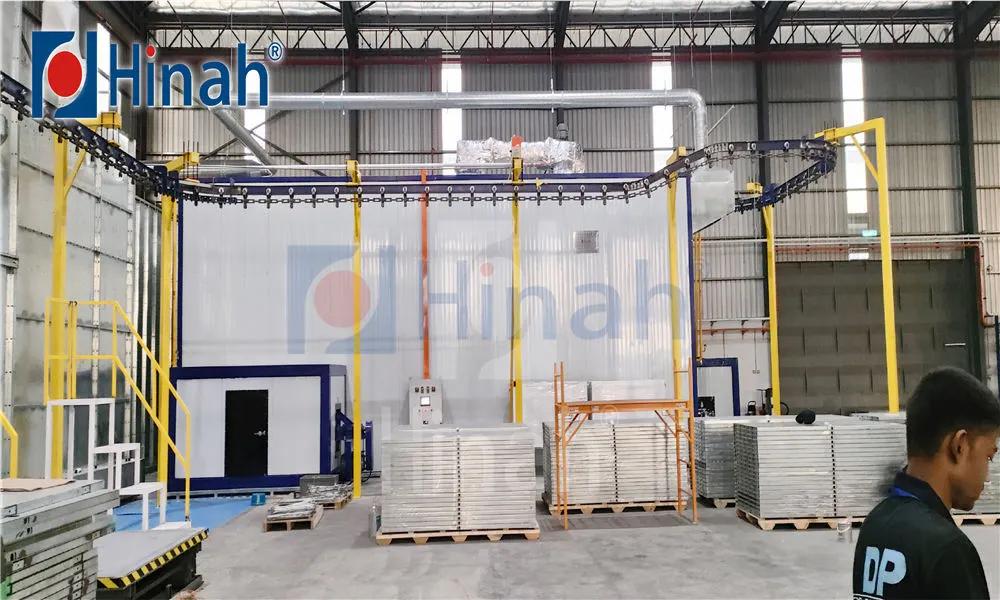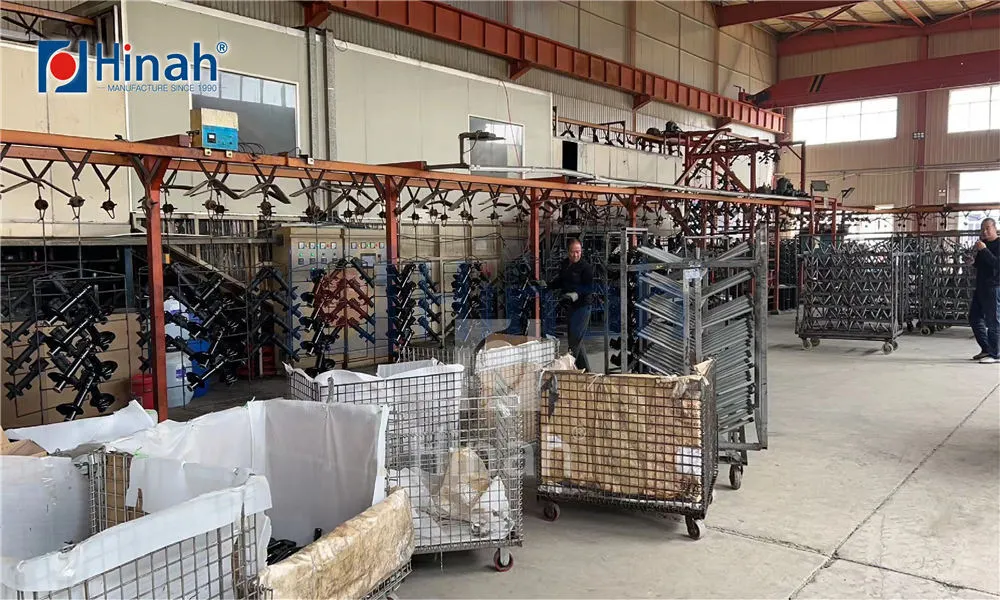If you're involved in manufacturing, automotive, or any industry that requires durable and efficient surface finishing, you've likely heard of a powder coating paint booth. This essential equipment plays a critical role in applying powder coatings to various materials, offering a robust and eco-friendly alternative to traditional liquid painting. In this article, we'll dive deep into what a powder coating paint booth is, explore its different types, discuss key applications, and provide practical advice on selecting the right one for your needs. Whether you're a business owner, an engineer, or simply curious, you'll gain valuable insights into how these booths work and why they're a smart investment for many operations.
A powder coating paint booth is a controlled environment designed for applying dry powder to surfaces, which is then cured under heat to form a hard, protective layer. Unlike liquid paints, powder coatings don't contain solvents, making them more environmentally friendly and reducing waste. The booth itself ensures that overspray is contained and filtered, maintaining a clean workspace and improving safety. As industries shift toward sustainable practices, the demand for efficient powder coating paint booths has grown, driven by their ability to deliver high-quality finishes with minimal environmental impact.
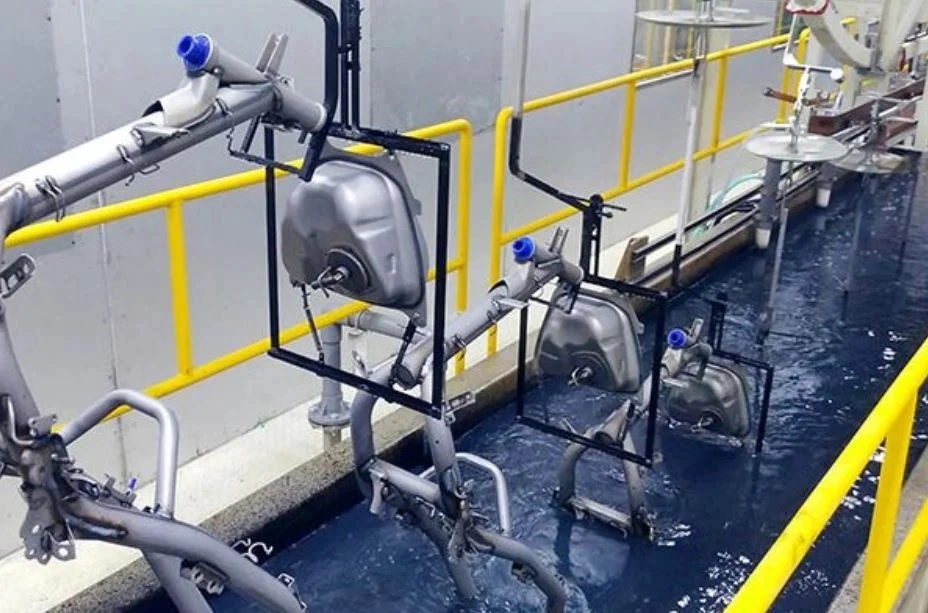
What is a Powder Coating Paint Booth?
A powder coating paint booth is a specialized enclosure where powder coating applications take place. It typically includes components like a spray area, recovery system, and ventilation to manage airflow and contain particles. The process involves electrostatically charging the powder particles, which are then sprayed onto a grounded object. The booth's design ensures that any excess powder is collected and often recycled, reducing material costs and waste. This setup is crucial for achieving uniform coverage and avoiding defects like orange peel or runs common in liquid painting. In essence, a powder coating paint booth provides a safe, efficient space for applying coatings that resist chipping, fading, and corrosion, making it a staple in many industrial settings.
Different Types of Powder Coating Paint Booths
When considering a powder coating paint booth, it's important to understand the various types available, as each suits different applications and space constraints. The most common designs include downdraft, crossdraft, and open-face booths.
Downdraft Powder Coating Paint Booths: These booths feature airflow that moves downward, pulling overspray through floor grates into a filtration system. They're ideal for large or complex parts because they minimize powder contamination and provide excellent finish quality. However, they can be more expensive to install and maintain due to their complex ductwork.
Crossdraft Powder Coating Paint Booths: In these models, air flows horizontally across the booth, with intake on one side and exhaust on the other. They're often more compact and cost-effective, making them suitable for smaller operations or simpler parts. The main drawback is that airflow might not be as uniform, potentially leading to uneven coating if not managed properly.
Open-Face Powder Coating Paint Booths: These are simpler enclosures with minimal structure, often used for manual applications or low-volume projects. They're affordable and easy to set up but offer less control over overspray, which can affect air quality and safety.
Additionally, modular powder coating paint booths are gaining popularity for their flexibility—they can be customized to fit specific space and production needs. When selecting a type, consider factors like part size, production volume, and available space to ensure optimal performance.
Key Applications in Various Industries
The versatility of a powder coating paint booth makes it valuable across multiple sectors. In the automotive industry, for instance, these booths are used to coat parts like wheels, frames, and engine components, providing a durable finish that withstands harsh conditions. The appliance industry relies on powder coating paint booths for items such as refrigerators and washing machines, where aesthetics and corrosion resistance are crucial.
In furniture manufacturing, a powder coating paint booth helps create sleek, scratch-resistant surfaces on metal chairs, tables, and outdoor fixtures. The architectural sector uses these booths for coating aluminum windows, railings, and structural steel, ensuring longevity and weather resistance. Even in electronics, powder coating paint booths apply protective layers to enclosures and components, safeguarding against moisture and wear.
Beyond these, industries like aerospace and agriculture benefit from the efficiency of a powder coating paint booth, as it supports high-volume production while meeting strict quality standards. By enabling precise application and quick curing, these booths help businesses reduce downtime and enhance product value.
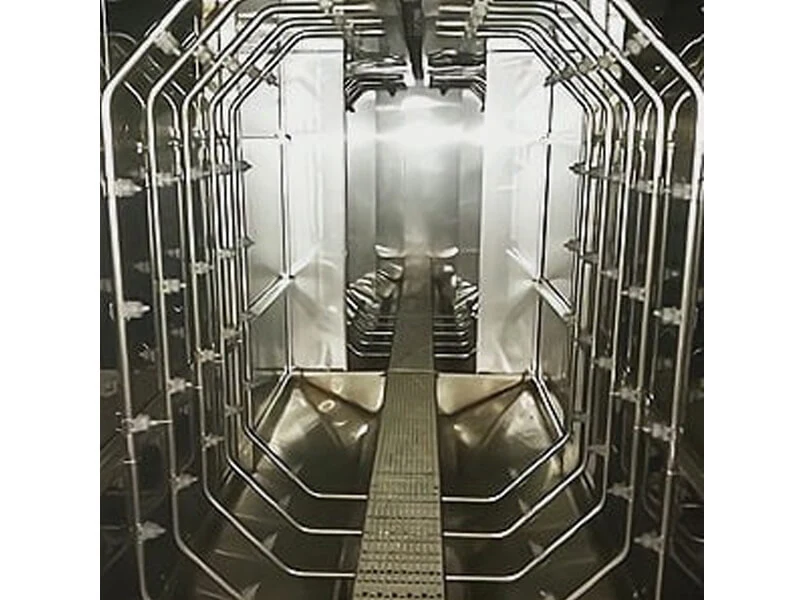
Factors to Consider When Selecting a Powder Coating Paint Booth
Choosing the right powder coating paint booth involves evaluating several factors to match your specific requirements. Start by assessing your production volume—high-output operations may need automated systems with larger capacities, while small shops might opt for manual booths.
Size and Space: Measure your available area to ensure the booth fits comfortably. A powder coating paint booth that's too small can lead to inefficiencies, while an oversized one wastes resources. Consider ceiling height, door access, and clearance for part movement.
Airflow and Filtration: Efficient airflow is critical for controlling overspray and maintaining air quality. Look for a powder coating paint booth with high-quality filters and a robust ventilation system. This not only improves safety but also extends the life of your equipment by reducing powder buildup.
Material and Build Quality: Opt for booths made from durable materials like galvanized steel, which resist corrosion and wear. A well-constructed powder coating paint booth will last longer and require less maintenance, saving you money in the long run.
Compliance and Safety: Ensure the booth meets industry standards, such as those from OSHA or EPA, particularly regarding electrical safety and emissions. Features like explosion-proof lighting and grounded systems are essential for a safe powder coating paint booth environment.
Budget and ROI: While upfront costs matter, consider the total cost of ownership, including energy consumption, maintenance, and potential powder savings from recycling. A higher-quality powder coating paint booth might have a steeper initial price but offer better efficiency and durability.
By carefully weighing these aspects, you can invest in a powder coating paint booth that boosts productivity and aligns with your business goals.
Understanding the Costs Involved
The cost of a powder coating paint booth can vary widely based on type, size, and features. Basic manual booths might start from a few thousand dollars, while large, automated systems can reach tens of thousands. Key cost drivers include the booth's dimensions, airflow capacity, and additional components like curing ovens or recovery systems.
For example, a small crossdraft powder coating paint booth for a workshop could cost between $5,000 and $10,000, including basic filtration. In contrast, an industrial-scale downdraft powder coating paint booth with advanced controls might exceed $50,000. Installation expenses, such as electrical work and ventilation ducting, can add another 10-20% to the total.
Ongoing costs for a powder coating paint booth include energy for ventilation and curing, filter replacements, and routine maintenance. However, the efficiency of a modern powder coating paint booth often leads to savings through reduced material waste and lower VOC emissions compared to liquid painting. When budgeting, factor in potential grants or incentives for eco-friendly equipment, as many regions support upgrades to powder coating systems.
The Technology Behind Powder Coating
At the heart of a powder coating paint booth is advanced technology that ensures precise application and curing. The process begins with surface preparation—cleaning and pre-treating the substrate to improve adhesion. Inside the powder coating paint booth, electrostatic spray guns charge the powder particles, which are then attracted to the grounded object. This creates an even layer without drips or sags.
The recovery system in a powder coating paint booth uses cyclones or cartridge filters to capture overspray, allowing up to 99% of the powder to be reused. This recycling capability is a major advantage, cutting material costs and minimizing environmental impact. Curing typically occurs in an integrated oven, where heat causes the powder to flow and cross-link into a durable film.
Modern powder coating paint booths often incorporate IoT sensors and automation for real-time monitoring of temperature, humidity, and airflow. This technology helps maintain consistency and reduces human error, making the powder coating paint booth a smart choice for quality-conscious operations.
Maintenance and Best Practices
Proper maintenance of your powder coating paint booth is essential for longevity and performance. Regularly inspect and clean filters to prevent clogs that can impair airflow and safety. For instance, in a busy shop, filter changes might be needed weekly, while lower-use environments could stretch to monthly.
Check the booth's structure for signs of wear, such as rust or damage to panels, and address issues promptly to avoid costly repairs. Lubricate moving parts and ensure electrical components are in good condition. Training operators on safe practices, like wearing PPE and following startup/shutdown procedures, can prevent accidents and extend the life of your powder coating paint booth.
Additionally, implement a routine for cleaning the spray guns and recovery system to maintain efficiency. By adhering to these best practices, you'll keep your powder coating paint booth running smoothly, reduce downtime, and ensure consistent, high-quality finishes.
Frequently Asked Questions
Q1: What is the typical lifespan of a powder coating paint booth?
A1: With proper maintenance, a powder coating paint booth can last 10 to 20 years. Factors like usage frequency, environmental conditions, and build quality play a role. Regular cleaning and part replacements, such as filters, can extend its life significantly.
Q2: How does a powder coating paint booth compare to a traditional liquid paint booth in terms of environmental impact?
A2: A powder coating paint booth is generally more environmentally friendly because it uses solvent-free powders, reducing VOC emissions. It also allows for overspray recycling, minimizing waste. In contrast, liquid paint booths often produce more hazardous waste and require additional ventilation for fumes.
Q3: Can a powder coating paint booth be used for small-scale or hobbyist projects?
A3: Yes, compact and open-face powder coating paint booths are available for small-scale use. They're affordable and easy to operate, making them suitable for hobbyists or small businesses. However, ensure proper ventilation and safety measures to handle powder particles effectively.
Q4: What safety precautions are necessary when operating a powder coating paint booth?
A4: Key precautions include wearing respirators and protective clothing to avoid inhaling powder, ensuring the booth is properly grounded to prevent electrostatic discharge, and maintaining clear access to fire extinguishers. Regular training on emergency procedures is also crucial for a safe powder coating paint booth environment.
Q5: How much space is required to install a powder coating paint booth?
A5: Space needs vary by booth type; a small booth might fit in a 10x10-foot area, while larger systems could require 20x30 feet or more. Consider extra space for part handling, curing ovens, and storage. Always consult manufacturer specifications for your specific powder coating paint booth model to plan accordingly.
In summary, a powder coating paint booth is a versatile and efficient solution for modern coating needs, offering durability, sustainability, and cost savings. By understanding the types, applications, and selection criteria, you can make an informed decision that enhances your operations. If you're considering investing in one, take the time to evaluate your requirements and consult with experts to find the perfect fit.


